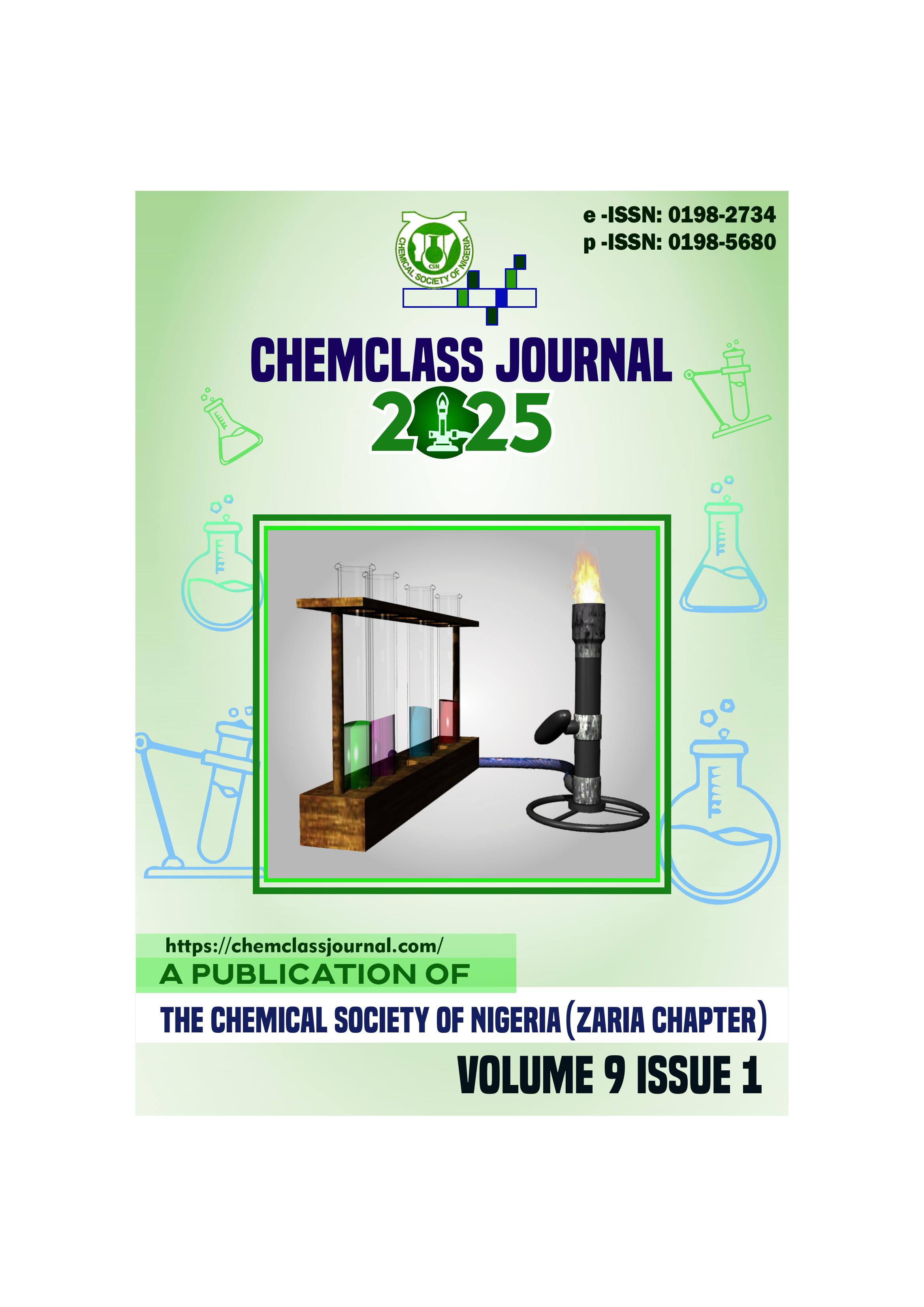Synthesis, Spectral Characterization and In Vitro Antihelmintic Evaluations of Cu(II) and Co(II) Complexes with A Novel Schiff Base Ligand
Keywords:
Characterization , In Vitro , AntihelminticAbstract
The novel Schiff base ligand (Z)-2-(benzalideneamino)-3-(1H-indol-3-yl)propanoic acid was synthesized
by condensation reaction of benzaldehyde and tryptophan. The complexes of this ligand of Cu (II) and Co
(II) were successfully synthesized and characterized physiochemically and spectroscopically. The ligand and the complexes showed a good yield ranging from 95 % - 98 %. The FTIR spectroscopic data showed
appearance of the azomethine (C=N), carbonyl group (C=O) and -OH group with peak at 1692 cm-1, 1580 cm -1and 3399 cm-1 respectively in the spectrum of Schiff base. The molar conductivity data of the Schiff
base was found to be 3.5 Ω-1cm2mol-1 indicating non-electrolytic nature whereas that of Cu and Co
complexes range between 103 -160 Ω-1 cm2 mol-1 indicated that the complexes were weak electrolyte in
water. On the basis of magnetic and electronic spectral data, octahedral geometry was proposed for all the
complexes. The UV-Vis spectra showed metal-ligand bond formation. The complexes demonstrated
various significant antihelmintic activities against Taenia spp compared to the ligand. The Co complex
showed similar biological activity compared to the ligand while Cu complex showed biological activity
higher than the ligand. Both the Co complex and the ligand showed a lower activity compared to the
standard drug except for Cu complex that showed the same activity as the standard drug hence, the Cu
complex synthesized is a good replacement for the existing drug





 ChemClass Journal
ChemClass Journal
